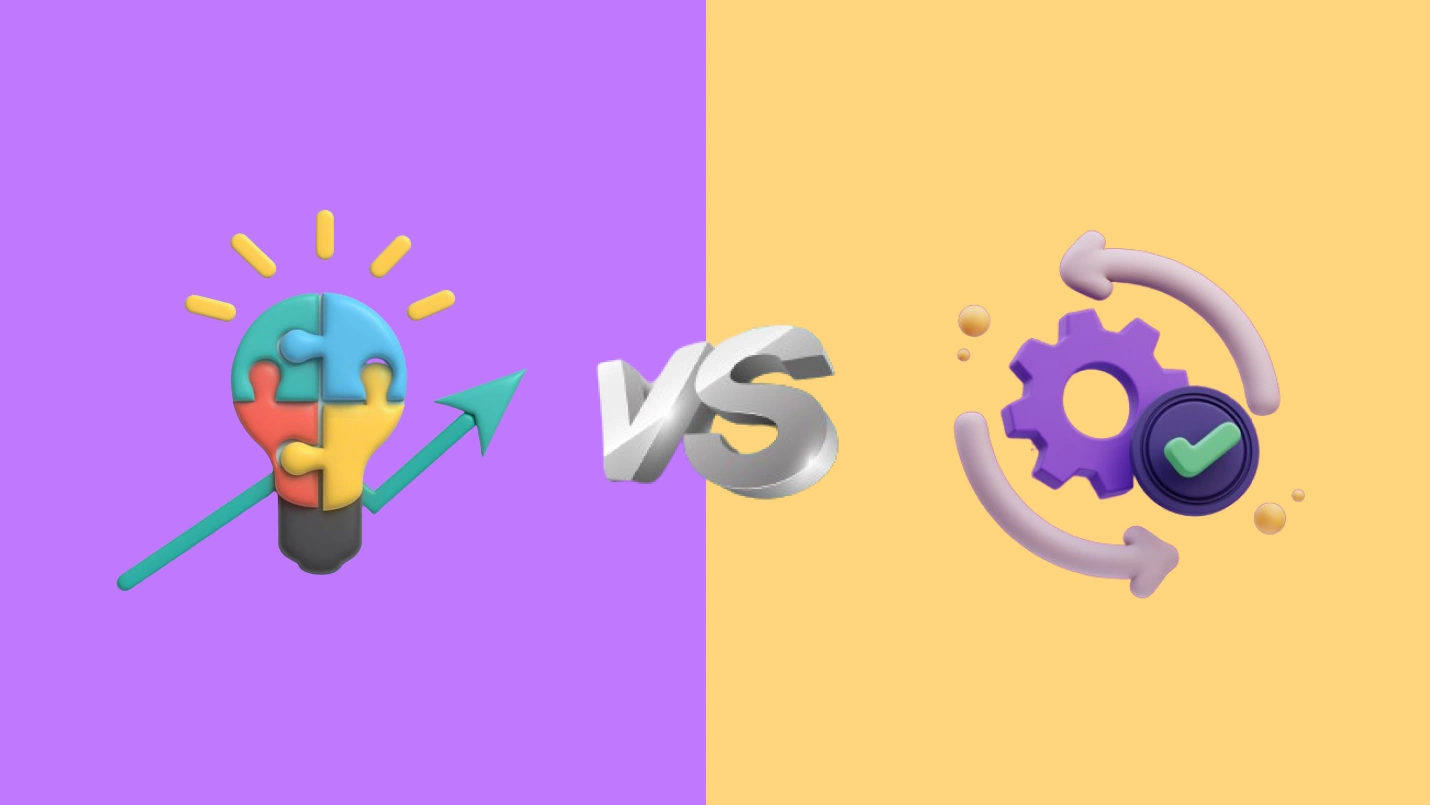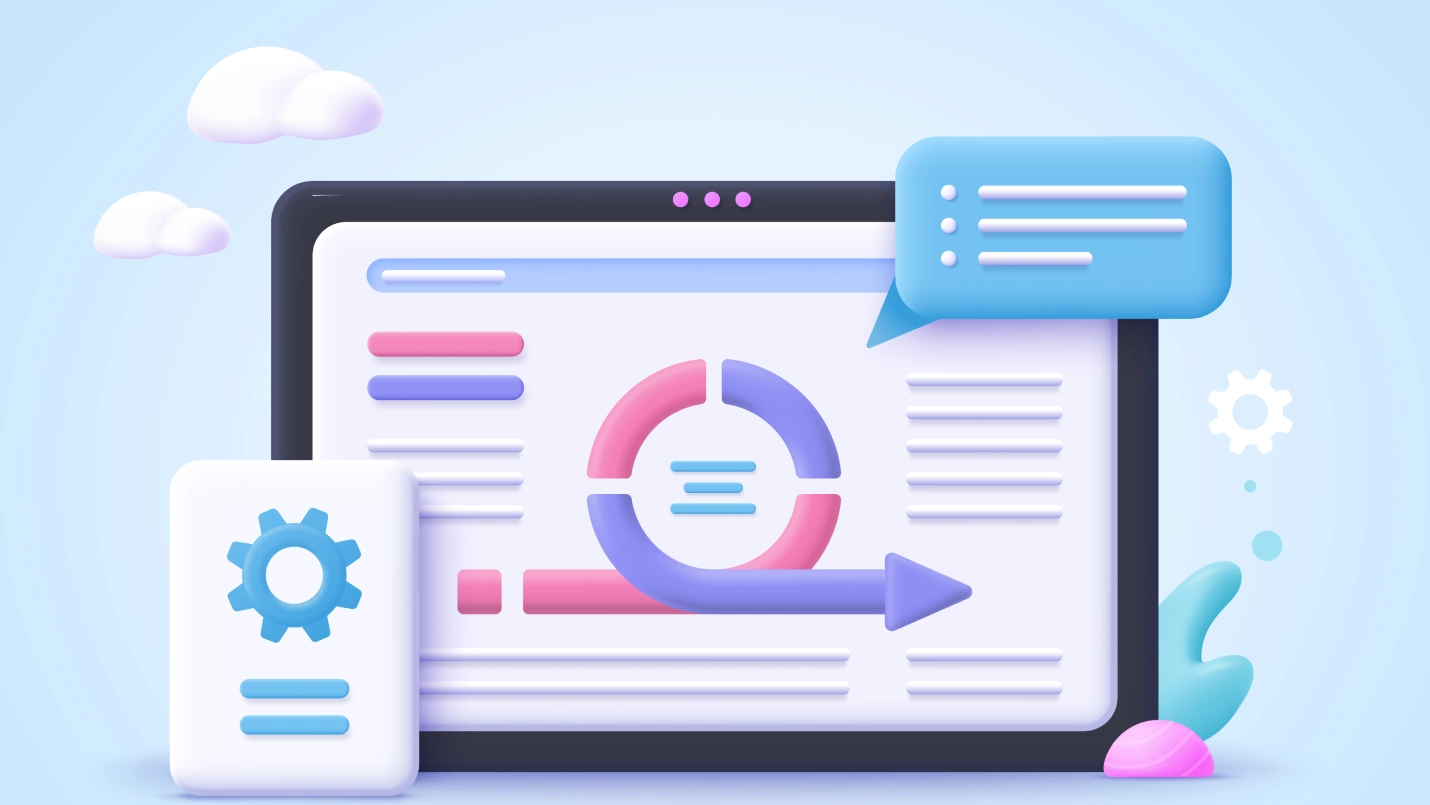Organizations must be flexible and adaptable to respond quickly to shifting markets and deliver customers’ desired products. Those same drivers have trickled down to software development in the form of two major methodologies: Agile and Lean.
Agile and Lean methodologies prize innovation, quality, and speed, which is why they are easily confused. In this guide, we will compare Lean and Agile: what these approaches have in common, how they are different, the benefits and drawbacks of each methodology, and how both Lean and Agile may be the right answer for your project.
Lean vs Agile: A Brief History
Software development has gone through its innovations in the past 30 years. The traditional approach to software development, known as the “waterfall” methodology, follows a sequential product development approach. Many software development teams still use it today. Although, they use it less frequently due to its rigid approach to changing needs and the need for early testing and feedback.
Newer software methodologies emerged including Lean and Agile. Let’s take a look at the history of each:
Lean Thinking
Lean Development applies lean principles to software development, focusing on continuous improvement of processes to eliminate waste and optimize how quickly value is delivered.
Lean development methodology borrows heavily from manufacturing, where “lean” became a process of removing “waste” – less human effort, less equipment, less time, and less space. Toyota introduced this concept in the Toyota Production System, developed by Japanese engineers Taiichi Ohno and Eiji Toyoda.
The concept of applying Lean to software development is credited to Dr. Robert Chartette in 1993, but it was not until 2003 when these concepts began to gain widespread momentum thanks to the publication of the Lean Software Development by Mary Poppendieck and Tom Poppendieck, a tome which codified the concepts of Lean Software Development (LSD).
In software development, Lean defines “waste” as manual, inefficient, and duplicate processes that add no value. Lean development is expressed through 7 principles that focus on reducing waste and risk while optimizing customer value:
- Eliminate waste Lean attempts to eliminate waste in the form of incomplete work, unnecessary code or features, task switching, delays, ineffective management, defects, or relearning.
- Amplify learning LSD aims to amplify team learning to avoid knowledge silos as well as to continually seek feedback in the form of user story development, code review, refactoring, testing, and knowledge sharing resources.
- Decide as late as possible Lean software development is wary of over-planning due to the changing nature of experimentation, testing, and feedback.
- Deliver as fast as possible Prioritize for speed with short iterations, effective communication, and approaches such as test driven development (TDD).
- Empower the team Encourage open communication and effective leadership.
- Build integrity in Build quality into what users can see (perceived integrity) and cannot see (conceptual integrity).
- Optimize the whole Ensure employees are incentivized to optimize for the whole, not just their specialized contributions.
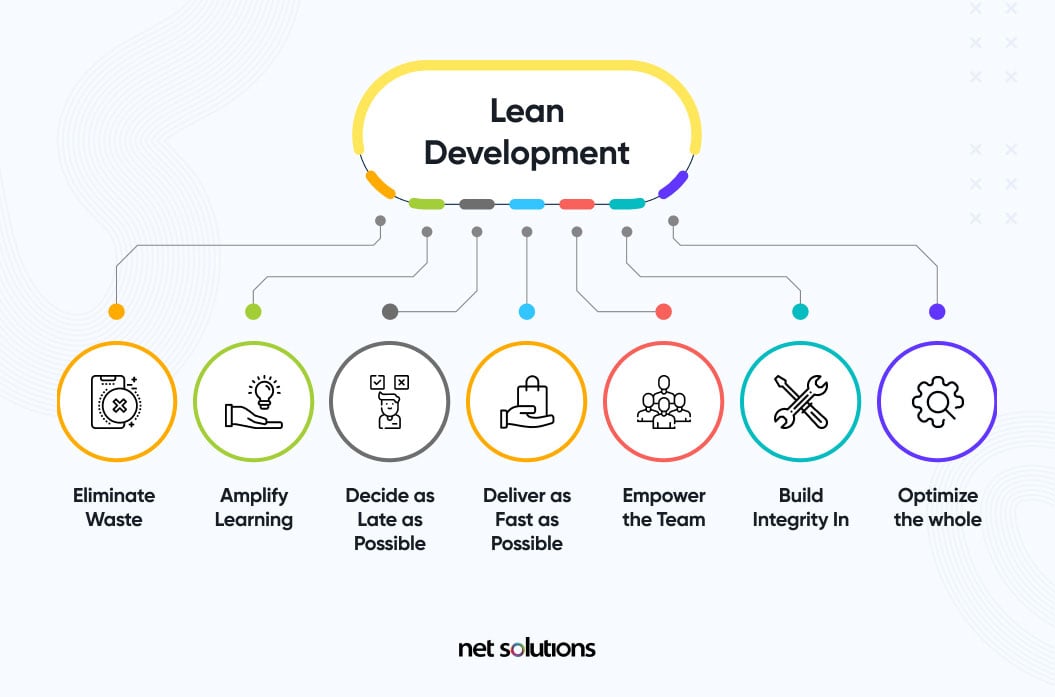
Lean methodology, when applied to software or any other area, is a set way of thinking, not a prescriptive set of rules for how to work or specific practices that must be followed. Instead, Lean is, by its definition, open-ended, making it an adaptable guide for when and how to find process improvements and create greater value.
Lean thinking extends into many areas including Lean startups, where the principles of early feedback, agile thinking, and iterative development can help organizations establish and develop the right idea for the market, developing as small a product (minimum viable product) as possible to start.
Any damn fool can make something complex, it takes a genius to make something simple. – Pete Seeger, Product Director at Docusign
Agile
Agile Software Development methodology is a philosophy centered on iterative and incremental development processes featuring time-boxed sprint cycles to collaboratively discover, develop and test an optimal solution. Agile introduces daily standups and retrospective practices that help identify what the Agile teams learned from past experiences and where improvements could be required.
The Agile methodology developed in the 1990s from the need for a lighter approach to software development; an approach that would be less regulated, planned, and managed than waterfall. Agile was one of many methodologies created during this time, Agile emerged as the most popular following the 2001 publication of the Manifesto for Agile Software Development, written by a group of developers, which consolidated several lightweight methods into the following 12 principles (the “Agile Manifesto”):
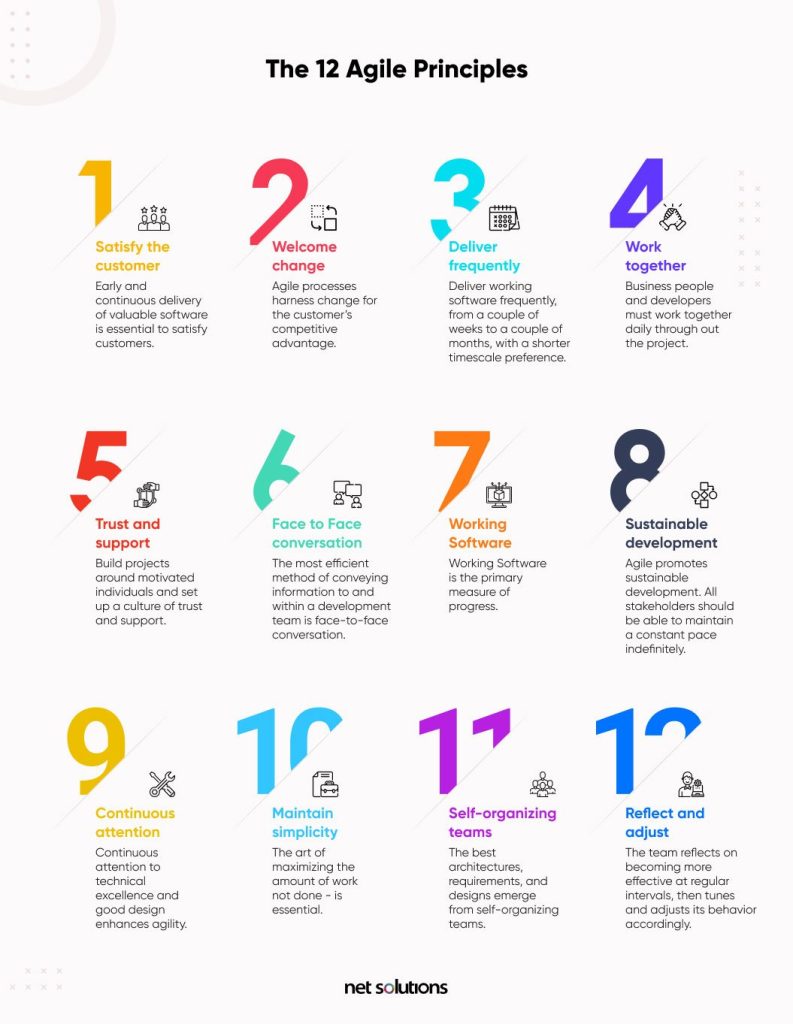
The Agile methodology is broken down into six clear stages that create a repeating model of feedback and iterative development:

We respect your privacy. Your information is safe.
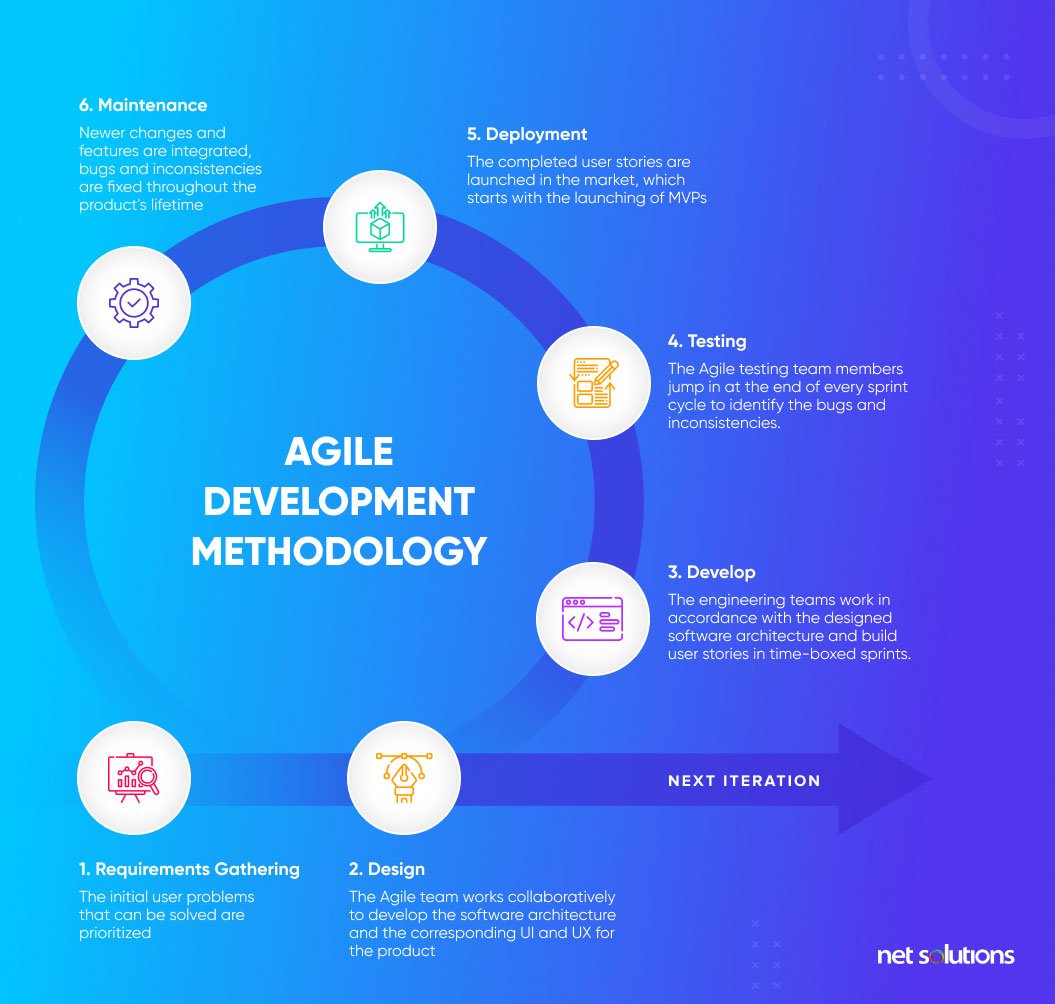
Agile is rooted in transparency, inspection, and adaptation. In the 15th State of Agile Report, the need to shift to a remote / hybrid workforce helped drive Agile adoption from 37% in 2020 to 86% in 2021.
Similarities Between Lean and Agile
Lean and Agile are very similar. In fact, some argue that Lean is a framework of Agile (this is our take and the take of the authors of the Agile Report), while others suggest that Agile was long ago inspired by Lean manufacturing methodology long before Lean Software Development was fully defined. This is a chicken vs egg scenario.
Both Lean and Agile are methodologies which are:
- Flexible Lean and Agile both incorporate short, iterative development and regular feedback, being open to change.
- Optimized Each methodology is dedicated to optimizing the processes of software development with regular feedback loops to catch defects or inefficiencies early.
- Empowered teams Both Lean and Agile put the brunt of responsibility on the workers. This means no micro-management and unwanted hierarchies.
- Support learning & collaboration Both methodologies encourage and support continuous learning and collaboration.
- Customer-centric Each methodology is centered on creating and optimizing customer value.
- Prioritized for speed Both Lean and Agile methodologies are known for creating efficient timelines to help optimize time-to-market.
Both Lean and Agile incorporate the concepts of early feedback loops:
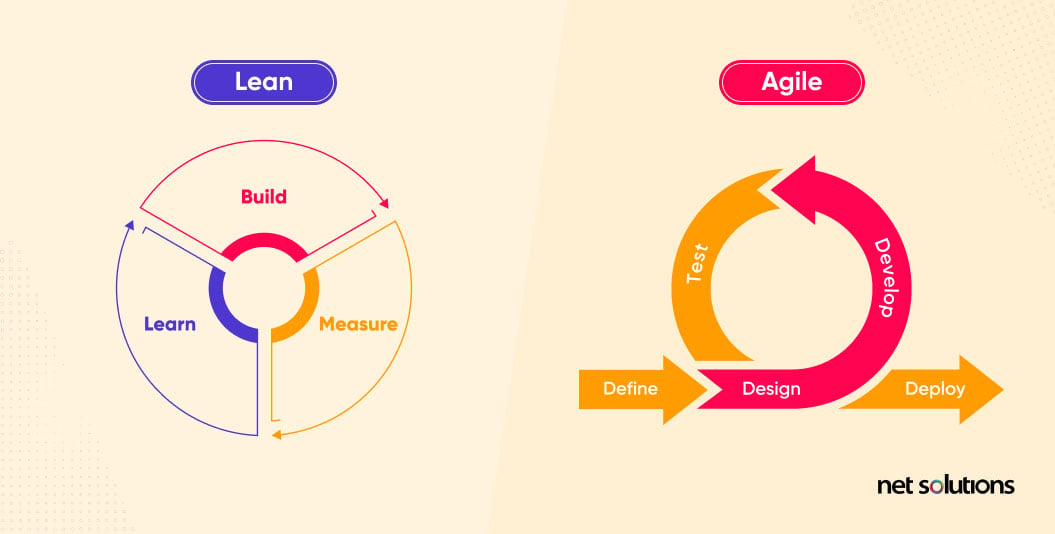
Lean vs Agile: The Difference Between Lean and Agile
Having looked at the similarities, you may wonder if there really is any difference between Lean and Agile. While they share similar principles and often outcomes, their perspective on development does differ.
At the most basic level, Lean Software Development is considered top-down, looking at the whole team (vs individual players) and viewing software development end-to-end for optimization. In contrast, Agile is considered bottom-up, breaking work into the smallest possible iterations.
Here are a few other Lean vs agile differences:
- Focus Agile is about helping companies build better products through small, frequent iterations. Lean is about improving processes with value for customers as the intended outcome, where quality is only one element of how a customer may define value.
- Time-to-Market and Iteration The logic behind iteration and fast development differ. In Agile, the focus on iteration is purposeful to build small units to gather feedback, learn, and improve. This often helps improve time-to-market overall, but speed is not the primary goal: feedback is. In Lean, a core principle is to deliver as fast as possible: this is achieved through speed and iteration, which eliminates over-planning and extensive work-in-progress.
- Customer feedback While both Lean and Agile optimize for customer value, and begin that with the development of user stories, the way “value” continues to be defined will differ. In Lean, teams deliver value by delivering a product quickly and without waste. In Agile, value is a moving target defined and changed with ongoing customer feedback to iterate and improve the product.
- Team Roles Agile prioritizes specific team roles, structured meetings (Scrum), and structured review processes. In contrast, Lean considers the functioning of the whole of the team or organization, not its constituent roles.
- Collaborative Processes
While continuous learning and passage of knowledge is integral to Lean and Agile both, Agile goes further by implementing greater cross-collaboration among team members, including developers, analysts, designers, QA, customers, and end users.
The Agile manifesto states that the goal of a development team is to overcome problems and churn out a workable final product. While that’s also a goal in Lean development, the importance of the process is emphasized over the final product in lean philosophy. - Structure Lean is a methodology that relies on a way of thinking, while Agile methodology can be put in practice leveraging structured frameworks such as Scrum and Kanban, which offer a set of strict tools and processes to apply Agile principles.
- New vs Repeatable Agile favors projects which are innovative or new, with the ability to adapt to new requirements as they come up. While Lean can improve new projects, as a production methodology applied to software development, process improvements become more apparent the more frequently something is done – so, for more repeatable projects.
Conclusion
Both Lean and Agile offer a set of principles that can be applied to software development to help ensure the right product is delivered as quickly and efficiently as possible. While this post has compared and contrasted Lean and Agile, it’s important to note that their core principles are not mutually exclusive. Organizations can be both Lean and Agile in their approach to software development.
A strong development team will choose between lean vs agile depending on its goals and the specific project being developed. It is just one step in the complete new product development journey that goes from idea to market commercialization.
The biggest product management challenge is resource alignment. Team sizes are always changing and frequently lopsided. Some weeks you have plenty of design bandwidth and no iOS, others you have no design and all iOS. – Ethan Hollinshead, Senior Product Manager at Strava
Do you have an idea you are looking to take to market? Don’t let a shortage of team members or bandwidth hold you back. Net Solution is an experienced full-stack service agency experienced in helping startups and organizations develop bespoke products that delight users and drive revenue. As a team, we apply principles of Lean to our Agile, DevOps culture to help identify opportunities and streamline their delivery.
Frequently Asked Questions
Agile and Lean are independent methodologies that evolved in reaction to the structured, inflexible traditional approach to software development known as ‘waterfall development.’ Lean Software Development borrows heavily from manufacturing methodologies to focus on optimizing value and reducing waste. Agile is a separate methodology whose focus is driving a dynamic, iterative development process to develop products aligned with business goals.
Lean and Agile are both methodologies with overall principles that can be applied, but neither are prescriptive. Scrum is a prescriptive framework, offering tools and best practices for the development of Agile processes. Scrum is one example of an Agile framework.
As noted above, Agile is a philosophy that is put into practice with frameworks – of which Kanban is one. Kanban is the second most popular Agile framework behind Scrum.
Agile UX integrates user experience (UX) design processes with Agile methodologies with a focus on collaboration, change, and iterative design and testing (including the use of wireframes and prototypes).
Lean UX integrates Lean thinking into UX, focusing on solving existing user problems, nimble design that skips over wireframes but still makes use of prototypes for early feedback.

